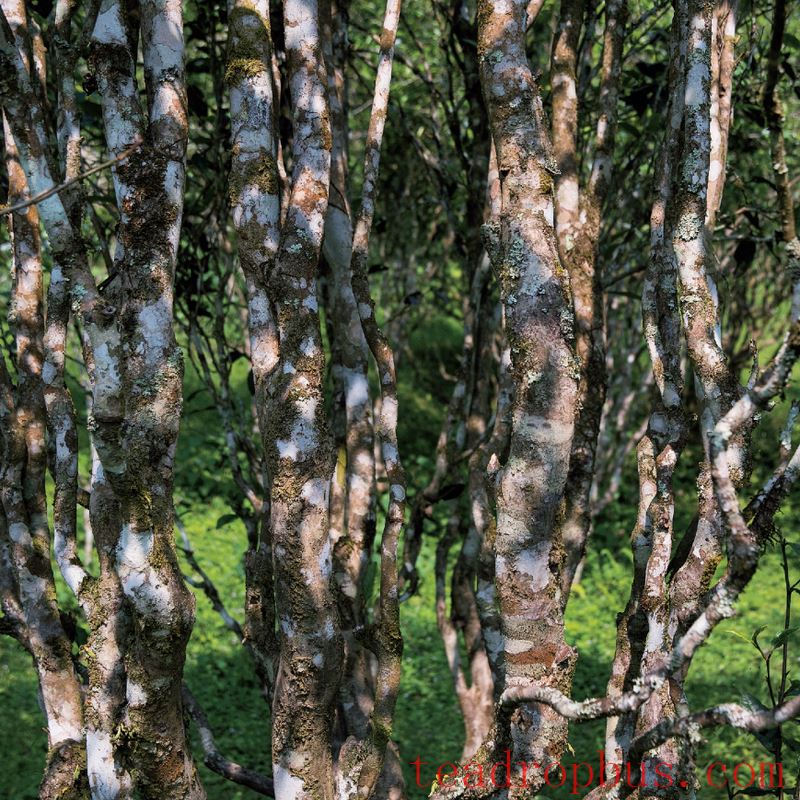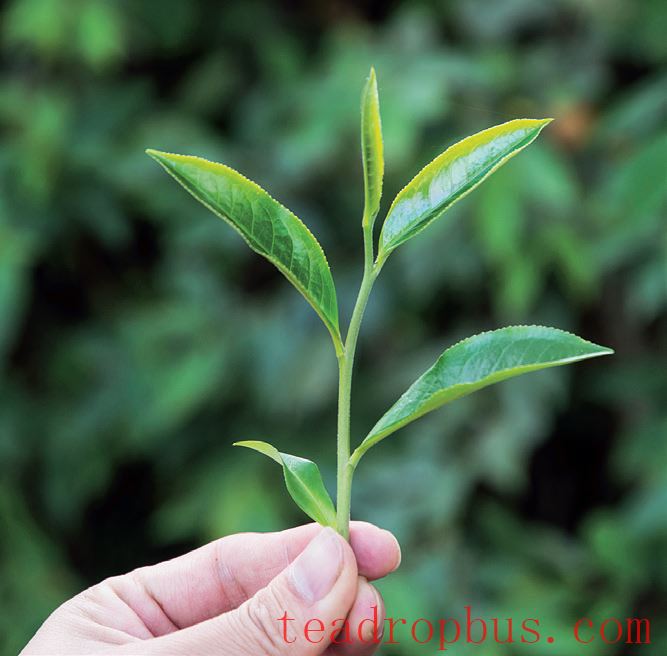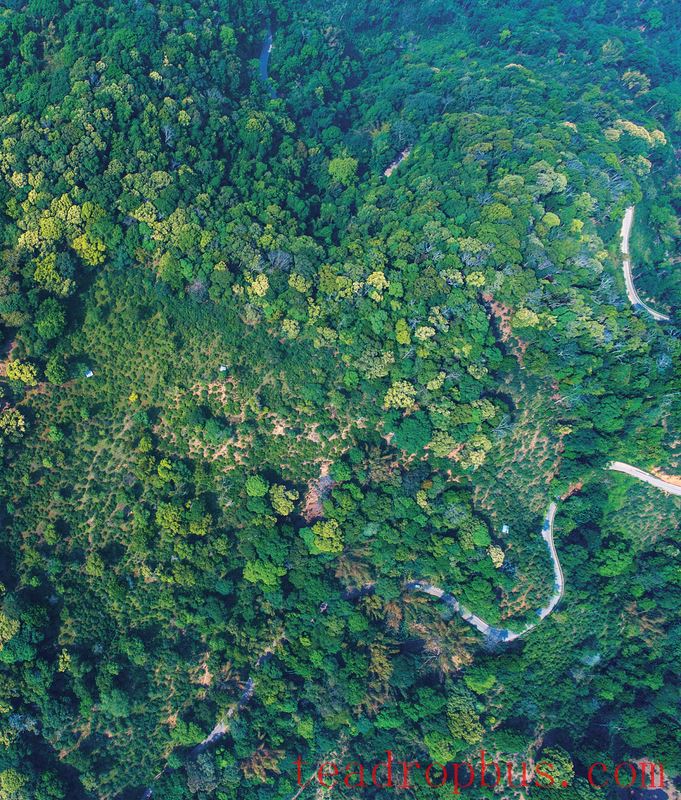
Mahei /
When discussing Pu'er Tea, it's impossible to avoid the topic of Yiwu. And when talking about Yiwu tea, one cannot overlook Mahei.
This village, located at the intersection of Yiwu Mountain and the Mansa tea mountain, not only connects the transition from the ancient tea mountains of Mansa to those of Yiwu but also leaves its mark in many of the renowned Pu'er teas of the past.
It is even considered by some as the birthplace of Yiwu tea due to the presence of the purest variety of Yiwu Lvxueya (Green Snow Bud) tea here.

03
/ Yiwu Lvxueya /
When we talk about Pu'er tea from the historical period known as the “Numbered Teas,” we cannot avoid the topic of Yiwu. In the history of Pu'er tea, Yiwu has a unique tea house culture, with dozens of named tea houses during the late Qing Dynasty and early Republican era, including well-known ones like Tongqing, Songpin, Fuyuanchang, and Cheshun.
Most of the existing Numbered Teas come from Yiwu, and these teas typically contain the Yiwu Lvxueya tea variety.
Yiwu Lvxueya, also known as Yiwu large-leaf tea, is native to places like Yiwu Township in Mengla County, Yunnan Province.

The trees have an upright or semi-spread posture, with sparse branches, and young shoots covered in downy hairs. The leaves are held horizontally, with a long elliptical shape, shallow serrated edges, and a long, slender tip resembling a tail.
The ancient tea trees in Mahei are primarily Yiwu Lvxueya, which is the purest variety found in Mahei and represents the epitome of the main characteristics of Yiwu tea, “aromatic and soft.” The most notable feature of Yiwu Lvxueya is its excellent potential for aging, becoming richer and more flavorful after a decade of storage. Many Numbered Teas are primarily made from this variety and remain vibrant and increasingly fragrant after nearly a century of aging. Pu'er teas from areas like Mahei, Luoshuidong, and Guafengzhai, in particular, have the highest durability and storability.
04
/ Flavor Characteristics /
Mahei ancient tree tea is characterized by its delicate aroma and softness, excelling in its gentle qualities and ranking among the finest of Jiangnei ancient tree teas.
In terms of appearance, Mahei tea has dark green, plump, and long tea leaves, with many downy hairs, shiny buds, and a high degree of tenderness. Even when picking up to four leaves with a bud, there won't be many yellow leaves.
The primary characteristic of Yiwu Lvxueya's aroma is a honey-like scent, sometimes referred to as caramel fragrance. When dry, the tea carries a honey-like aroma that becomes floral and sweet in the infused liquor. In the liquor, the honey fragrance blends with a delicate orchid scent, often called “honey orchid fragrance,” which is clean, penetrating, and transparent.
From the perspective of the tea liquor's character, the most distinctive feature of Mahei tea is its smooth and rich sweetness. This is due to the moderate content of polyphenols in Mahei tea. For example, the polyphenol content of Fuding Dahong tea is 18-19%, while that of Bingdao tea is 26%. In contrast, the polyphenol content of Yiwu Green Bud tea ranges between 22-24%.
A low polyphenol content and high water-soluble content result in a thick and viscous liquor with a bright oil film on the surface, indicating a rich and well-balanced inner substance.
In terms of taste, the characteristics of Mahei tea are sweetness, softness, and freshness, with a strong and lasting aftertaste and salivation-inducing properties. The sweetness is a combination of bitterness and soft sweetness, where bitterness and sweetness accompany each other. With an amino acid content of 4.1%, Mahei tea is exceptionally fresh and refreshing.


We present our tasting notes for the 2025 Mahei Shimenkan Ancient Tree Spring Tea, produced by Fulu Tea, as follows:
Maocha: The characteristics of Mahei tea include abundant downy hairs, longer stems, robust and dark Green Tea leaves, and a handsome appearance.
Color of the liquor: Orange-yellow and glossy.
Aroma: The first two infusions reveal a prominent aroma, with a subtle and silky floral fragrance pouring out upon entry. The aroma gradually intensifies, transforming from floral to honey-floral. After the sixth infusion, the aroma is balanced, heavy, and robust.
Taste: The first three infusions are sweet like honey, with a soft and delicate texture. The middle section features a smooth and silky mouthfeel, a full-bodied and thick liquor, a sweet and smooth flavor, and the freshness begins to emerge. In the later infusions, the aroma and depth reach their peak, with a pronounced throat sensation, a gentle yet firm character, and a clearer and deeper liquor, demonstrating profound qualities.
Aftertaste: Deep throat sensation and a lingering finish.
Leaf base: Long, lively, abundant in downy hairs, with a long tail on the leaf tips.
(Thanks to Fulu Tea for providing the tea samples for this tasting)
Excerpt from Pu'er Magazine
September 2025 Issue
Text/Images: Duan Zhaoshun
Please contact us if there are any copyright issues.